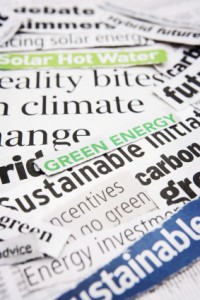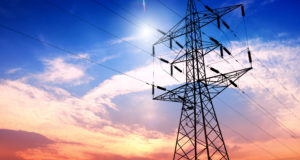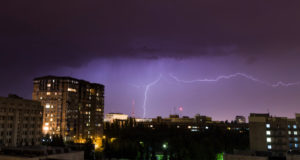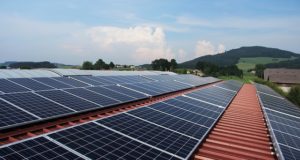Sustainability is a central theme in off-the-grid living, and as technology advances, it becomes easier to access the sustainability one desires at a cost that’s relatively inexpensive to prior years.
 However, this proliferation of access to energy and value in acquisition also brings looseness in the mindset of those who participate in it. Suddenly, those who have access to energy alternatives seem to take for granted the amount of energy available. They get, perhaps, a bit sloppy in the planning of their real life implementation. They begin to feel so confident in their systems and planning that they disregard the realistic levels of energy consumption they should be budgeting for. Many off-the-grid practitioners plan on replacing their everyday energy sources with that produced from alternative resources. In a vast majority of these scenarios, it is impossible to make these assumptions and rely on this belief. It can be extremely expensive and inefficient to try and replace your current consumption.
However, this proliferation of access to energy and value in acquisition also brings looseness in the mindset of those who participate in it. Suddenly, those who have access to energy alternatives seem to take for granted the amount of energy available. They get, perhaps, a bit sloppy in the planning of their real life implementation. They begin to feel so confident in their systems and planning that they disregard the realistic levels of energy consumption they should be budgeting for. Many off-the-grid practitioners plan on replacing their everyday energy sources with that produced from alternative resources. In a vast majority of these scenarios, it is impossible to make these assumptions and rely on this belief. It can be extremely expensive and inefficient to try and replace your current consumption.
While it is certainly possible to produce enough energy through alternate means to run your current array of daily comforts and necessities, it is perhaps a more efficient and valuable technique to alter the mindset and begin planning for need, rather than comfort. The reward for this shift in mindset is more energy to keep stored for more drastic emergencies, less costs for the building of systems, and the most important—the absolute ability to put a system in place at all. Small systems are inexpensive to build and maintain, and having some energy in a blackout scenario will ALWAYS be better than having none. Grandiose plans for an all-inclusive system could prevent you from putting in place the bare minimums to begin being prepared now.
Alternative energy is 100% based on the theory of maximizing efficiency. If you aren’t maximizing the efficiency of your system, then at least a portion of the big picture is being missed. While it would be nice to see millions of like-minded individuals who live the off-the-grid lifestyle producing massive excesses of energy, it’s simply not the reality. Instead, we must break down our requirements into those that are absolutely necessary to survival and those that are comfort desires, and then implement strategies to address these scenarios. This ideology takes planning.
This planning starts with understanding your true needs and working towards implementing modular systems to ramp up to your increasing needs at a stable, comfortable, and sustainable pace.
Which items (those that can be plugged in) are POTENTIALLY LIFE ALTERING if you do not have them?
- Refrigeration for medications like insulin
- A low-energy deep freezer for large quantities of “fresh frozen” foods and meat
- Underground/indoor gardening systems which require light sources
- Communications devices
- Heat sources for boiling water and preparing food
 Some notes as to the reasoning for the above bullet point list:
Some notes as to the reasoning for the above bullet point list:
Insulin can be life sustaining in almost all cases for certain diabetics, and it, along with other important medications, requires refrigeration. This is the type of energy need that cannot be ignored. These types of energy needs should be viewed as absolutely necessary.
Having a thermally efficient freezer unit (or multiple units) can preserve life-sustaining stores of food and should be considered an essential part of an overall energy management and food storage plan. If monitored properly, even on smaller systems, such a unit could be run intermittently with excellent results in a pinch.
Protected hydroponic or indoor soil systems require a fairly regular supply of energy, but they can be planned for. Fresh produce as a food source can be essential in any survival or self-sustainability situation; it can boost morale and keep your body supplied with vitamins. The ability to control food production gives you the power of sustainability. In areas with extreme cold or where there is a substantial threat of theft or pestilence, even a small system can be an excellent choice, but the user must plan efficiently and understand their system well.
Most communications devices will be online for some time beyond a blackout’s beginning, and having access to these devices will be comforting and useful. Luckily these types of devices draw very little energy for the most part and shouldn’t negatively impact your resources too much.
Heat will be a necessity in many situations, especially where mechanical water filtration isn’t the best option. Cooking on an electric unit can reserve your fuel sources for more important needs, like backup gas-powered generators in case of catastrophic failure of other systems, gas-powered tools, and vehicles needed for transportation. Propane can also be reserved for other needs if electricity is easy to generate. Being stingy with your most important resources will only serve to buoy your longevity.
Now we must explore concepts surrounding alternative energy generation to get a better idea of how to swing the benefits in your favor.
As efficiency is paramount, look for ways to harness the most efficient energy source available to you. For most users, especially those without massive financial resources, that is solar energy. If you live on that special piece of property that connects to the beach or has a year-round river nearby, it may be hydroelectric generation. If you have large property that experiences wind currents, wind energy may be the most efficient alternative to grid sources. For most, you will need a substantial battery back-up to issue the type of energy you need to run devices. (For example, a refrigerator would not be able to be run on a singular battery—the drain on the battery cell would be so great that it would damage the battery within hours.)
It really is important to focus on conserving energy and delivering energy at the most efficient levels. If you want to be able to wash clothing in a washer, you could spend thousands of dollars to build a system which is capable of handling that power draw in addition to more necessary items. Instead, you could look for ways to lessen that energy need. You may need to alternate power draws from things like freezers to one load at a time for clothing, but you will need the power system capable to do this; you may even need to manually wash clothing to conserve energy for more important things.
The main point here is this: You MUST understand what you CAN produce and which things are necessities as opposed to comforts. You MUST be able to determine at which point your system loses efficiency and be able to counteract the inefficiencies. You need to be able to look at your options with common sense, and most importantly, you need to begin doing all of this and planning your system now. Furthermore, not only should you be planning now, but you should be implementing the plan in steps to ensure it actually happens. If a blackout scenario happened and you weren’t prepared for it with an adequate system, you could find yourself in a potentially life-threatening situation.
With that in mind, here are some key point lists and action items to think about or to use in your program.
Look for items that place mechanical advantage high on the list:
- 5.10 light for life flashlight: Uses induction technology (magnets) to charge a light in seconds and lasts for ninety minutes.
- Deep freezers with thermal blankets additionally placed in the freezer: Allows cycling on and off power so you can interrupt the power source when needed and not risk degradation to your frozen items, within reason.
- Solar water heating structures: Use natural heat to increase the temperature of water in thin dark tubes and store the heated water in a well-insulated coffer, which then regulates the heat based on solar-driven energy for things like showers, dishes, clothes washing, swimming, etc.
- LED lights with small rechargeable battery backups: Keep power draw low and increases life of bulbs. LED-based normal bulbs are also viable options.
- Cookware made with heat transfer units on the outside of the device: Speed cooking and keeps food hotter, longer. A Crisis Cooker or solar oven are excellent choices.

- Composting, gravity-fed sewage system: Use as a primary toilet to ensure longevity and remove the need for sewage service from public entities.
- Effective weather stripping and insulating blankets: Use during the colder periods around doors and windows to avoid excess need for heat generation.
- Mechanical, gravity-fed water filters: Use instead of boiling, where it’s appropriate.
- Solar Back-ups: Solar battery backups that can charge almost all consumer electronic devices from laptops to cell phones to mp3 players and handheld gaming consoles. Enables efficient transfer of energy from your main system, and regimented regulation of energy usage for those devices.
Determine necessity based on the following checklists.
Ask yourself:
- Does this item require electricity and have a potential to hurt me if I don’t have it plugged in?
- Insulin (refrigeration)
- Breathing machines
- Air filters in contaminated areas
- Blood testing or other medical equipment
- Am I using this item to avoid having to do more important tasks, or am I using energy that can be better utilized elsewhere?
- Video game machines
- Laptops
- Televisions/DVD/audio systems
Build modularly to produce a more usable system:
- Start with enough to run the absolutely essential equipment—for those without medical issues or medical device needs, that may be:
- Deep Freezer- will need at minimum 900W start up and 250W continuous to run smoothly.
- Average refrigerator- 800W start up and 225W continuous
- Average washing machine- 1000W
- Large electrical coffee pot- 1200W
Obviously it’s more efficient to use the food storage items than it is to run the non-necessary items. It also contributes to a more essential need.
Make sure you are planning for the energy waste that comes along with a battery bank, an inverter, and alternative energy. Pay attention to the following notes:
- Budget for 1.5 times the amount of energy you will actually need, as there is energy waste. In other words, you will need 1.5 times the watt hours that your device ratings dictate.
- Watt hours will be dependent on battery bank size and sun hours—meaning, if the sun is only out for 2.5 hours and you have 2x100Watt panels, you can expect to have 500Watts of power stored, and about 350Watts of usable energy. So plan accordingly for your weather, sun exposure, and battery bank.
There is a lot of information even in this basic article, so please try to look at additional resources to help you determine what fits best for your situation. Ask questions on forums, ask sales people, ask experts—there are limitless options in building an alternative energy generation system. In fact, the only thing which remains constant is that you MUST be careful to regulate how much of your energy usage is for things that are luxury items. You do not want to be put into a position to suffer or have life threatening situations brought about by not using your energy properly.
Learning to become self-sufficient, supremely energy efficient, and alternative energy competent will help you to realize the peace of mind, security, and stability you crave from the off-the-grid lifestyle.
——————————————————————
Amazing “Solar Generator”
Is Like Having A Secret Power Plant Hidden In Your Home!
——————————————————————
 Off The Grid News Better Ideas For Off The Grid Living
Off The Grid News Better Ideas For Off The Grid Living




